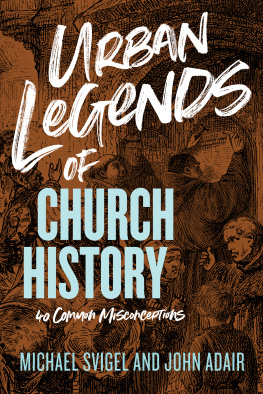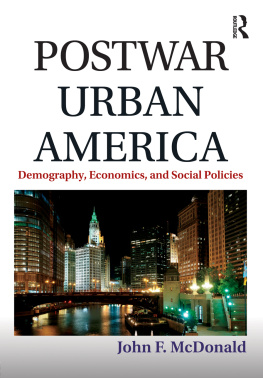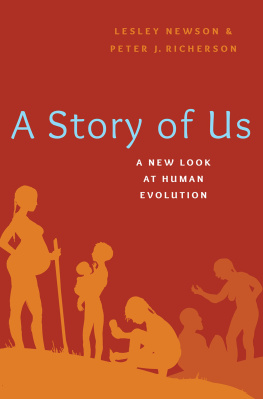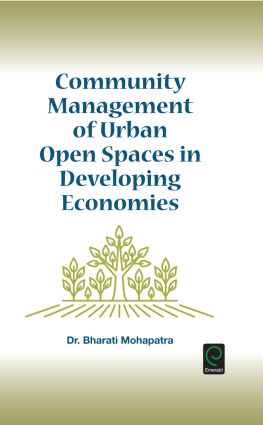Four Years
Old
in an Urban
Community
First published 2009 by Transaction Publishers
Published 2017 by Routledge
2 Park Square, Milton Park, Abingdon, Oxon OX14 4RN
711 Third Avenue, New York, NY 10017, USA
Routledge is an imprint of the Taylor & Francis Group, an informa business
Copyright 1968 by George Allen & Unwin Ltd.
All rights reserved. No part of this book may be reprinted or reproduced or utilised in any form or by any electronic, mechanical, or other means, now known or hereafter invented, including photocopying and recording, or in any information storage or retrieval system, without permission in writing from the publishers.
Notice:
Product or corporate names may be trademarks or registered trademarks, and are used only for identification and explanation without intent to infringe.
Library of Congress Catalog Number: 2007027150
Library of Congress Cataloging-in-Publication Data
Newson, John, 1925-
Four years old in an urban community / John Newson and Elizabeth Newson.
p. cm.
Originally published: London : Allen & Unwin, 1968.
Includes bibliographical references and index.
ISBN 978-0-202-36164-2
1. ChildrenGreat Britain. 2. Child rearing. I. Newson, Elizabeth, 1929-II. Title.
HQ792.G7N39 2007
306.874094252709046dc22
2007027150
ISBN 13: 978-0-202-36164-2 (pbk)
ACKNOWLEDGMENTS
The research study which this book reports was financed by the Nuffield Foundation. It could not have been carried out without the Foundations generous support, and we should like especially to offer our grateful thanks to Mr Brian Young and Dr J. W. McAnuff for their continued help and encouragement.
We must again acknowledge with gratitude the assistance of the City of Nottingham Health Department, and in particular the Medical Officer of Health, Dr William Dodd, and his staff, who once more gave us full co-operation in the compilation of our sample. We are also indebted to the City of Nottingham Education Committee; especially to the Director of Education, Mr W. G. Jackson, to the Superintendent of the School Welfare Department, Mr M. G. Taylor, and to the School Welfare Officers, who have shown us the utmost kindness in checking and tracing the addresses of the children as we follow them up. We count ourselves fortunate indeed to be able to work with research-minded authorities such as these.
A study of this sort is absolutely dependent upon the quality of its interviewers. We are very conscious of the debt we owe to ours, who do not restrict their skill to the interview itself, but offer us their interest, their perspicacity and their understanding at every stage of our work. We are often asked what qualities we look for in a good interviewer: our answer is intelligence; flexibility; but, above all, niceness: and these qualities we have found. Our especial thanks to Joan Burgess, Jean Crossland, Jean Jacobs, Clare Jones, Dady Key and Erica Mattingly.
One of the pleasures that arise out of publishing a book on a research project, not anticipated by us but nonetheless welcome, is the correspondence and visits it brings from others of similar interests or working in allied fields. Obviously we cannot mention all these friends and colleagues individually; but we should like them to know how much we value these interchanges of views and the new insights which we have gained from them.
Our own children continue to be the most educative element in our lives, as well as the most entertaining and engrossing: to Roger, Carey and Joanna, our gratitude and our love.
Finally, to the 700 mothers who have welcomed us into their homes and found time in their busy lives to talk to us, we can never adequately express our thanks. They are the co-authors of this volume. Once again, our book is dedicated to them, and to the children in whose growing-up they so generously allow us to share.
CONTENTS
List of Tables
The reader will find it advisable to consult for the statistical procedures upon which these tables are based.
CHAPTER 1
Background and Introduction
This book is about a group of seven hundred children as they reach their fourth birthdays in the English Midland city of Nottingham. It is about the social and material context of their lives: the streets and street-friendships, backyards and neighbours, homes and families, which make up the kaleidoscope of their everyday environment. It is about the emotional tie which forms the core of each childs experience-his relationship with his parents; and in particular, since he is only four years old, it is about the behaviours and emotions which are generated between the child and that person with whom he spends the greater part of his waking life-his mother.
Our study of four-year-old children is the second phase in a long-term project designed to investigate parent/child relationships in developmental sequence. Our aims are threefold. Firstly, we hope to achieve a very detailed picture of the child himself at successive stages of his development from babyhood to late adolescence, a picture built up from his behaviour not in a clinic or nursery school setting, but in his more natural habitat, the home and its immediate surroundings. Secondly, we want an equally clear picture of the mothers behaviour in relation to her child, and to see how this alters and develops, both in accordance with the childs objective age, and in response to his idiosyncratic needs and demands; and we are interested not only in her actual observable behaviour, but in her own attitudes, emotional and intellectual, towards her behaviour. Thirdly, we look for the emergence of patterns in the data which we collect, and these may be of two kinds: they may be cross-sectional patterns, leading us to draw conclusions which have validity within a particular age-phase; or they may be longitudinal patterns, much slower to emerge, from which eventually we may learn something about cause and sequence in child-rearing and personality growth.
The first stage in this research project was described in our study of mothers and their year-old babies. We have been fortunate enough to obtain the financial support necessary for the continuance of this work, and we are committed, gladly, to its completion. The chief value of a follow-up study of this sort is, of course, the long perspective which we shall finally achieve of the upbringing of any individual: a perspective in which the details are not the inevitably distorted reconstructions of parents memories, but rather a related series of portraits from life, each one true to the child and to the mother at a specific moment of time. It is such an accumulation of contemporary rather than retrospective data which is needed if the more complex questions of socialization are to be answered; and, while at any given age we are interested in all the problems and pleasures characteristic of that phase of development, in the long term it will be the recurrent theme of socialization, sometimes hidden, sometimes very explicit, but always relevant to every situation involving children and parents, which runs like a master thread through any sequential study of child rearing. For this reason, we are continually alert to the moral atmosphere in the home: by which we mean simply the extent to which, and the means by which, behaviours and attitudes are presented to the child in evaluative terms as good or bad, right or wrong, acceptable or unacceptable.












